The University Record, March 18, 1997
Seven named to Thurnau Professorships
Seven U-M faculty members were named by the Regents at their February meeting to the Arthur F. Thurnau Professorship, which “recognizes and rewards faculty for outstanding contributions to undergraduate education.”
Those honored are Luis O. Gomez, the Charles O. Hucker Professor of Buddhist Studies; Sally A. Haslanger, associate professor of philosophy and women’s studies; James L. Hilton, associate professor of psychology; Diane M. Kirkpatrick, professor of history of art; Valerie Ann Kivelson, associate professor of history; Michael G. Parsons, professor of naval architecture and marine engineering; and Phillip E. Savage, associate professor of chemical engineering.
The Thurnau Professorships, named after Arthur F. Thurnau, a U-M student in 1902-04, are supported by the Thurnau Charitable Trust established through his will. The University each year selects faculty members who are designated as Thurnau Professors for a three-year term and receive a grant to support their teaching activities.
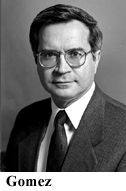 Gomez is “a brilliant scholar of Buddhist Studies and has made extraordinary contributions to undergraduate education,” Provost J. Bernard Machen said in presenting the names to the Regents. “In addition to creating courses in Chinese Buddhism, Japanese Buddhism, and Zen Buddhism, he is a polymath who has taught many courses entirely outside his department in psychology, religion, history, the Inteflex Program, Great Books and Honors. His survey courses in Asian religions routinely draw more than 100 students each.”
Gomez is “a brilliant scholar of Buddhist Studies and has made extraordinary contributions to undergraduate education,” Provost J. Bernard Machen said in presenting the names to the Regents. “In addition to creating courses in Chinese Buddhism, Japanese Buddhism, and Zen Buddhism, he is a polymath who has taught many courses entirely outside his department in psychology, religion, history, the Inteflex Program, Great Books and Honors. His survey courses in Asian religions routinely draw more than 100 students each.”
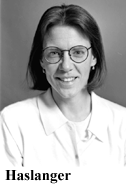 Haslanger “combines energy, expository skill, openness and sheer hard work to inspire undergraduates at all levels,” Machen said. “She has the rare ability to reach diverse audiences—non-concentrators and concentrators, first-year and advanced students, humanists and social scientists—within a single course. She takes great care to engage all students over the course of the term. Their response is to give her the highest score in their evaluations of her teaching—and this often from every student in her courses.”
Haslanger “combines energy, expository skill, openness and sheer hard work to inspire undergraduates at all levels,” Machen said. “She has the rare ability to reach diverse audiences—non-concentrators and concentrators, first-year and advanced students, humanists and social scientists—within a single course. She takes great care to engage all students over the course of the term. Their response is to give her the highest score in their evaluations of her teaching—and this often from every student in her courses.”
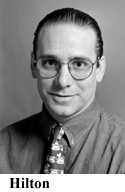 Hilton, Machen said, is “a master lecturer, an innovative teacher in large classrooms, an excellent trainer of teaching assistants, and a superb research mentor for both undergraduate and graduate students. His classes are alive with questions, comments by students, and presentations by students and guests. As undergraduate chair in psychology, he has led programmatic reforms to improve the quality of teaching, and he has changed the curriculum so that all undergraduates have opportunities for small advanced seminars and laboratory courses.”
Hilton, Machen said, is “a master lecturer, an innovative teacher in large classrooms, an excellent trainer of teaching assistants, and a superb research mentor for both undergraduate and graduate students. His classes are alive with questions, comments by students, and presentations by students and guests. As undergraduate chair in psychology, he has led programmatic reforms to improve the quality of teaching, and he has changed the curriculum so that all undergraduates have opportunities for small advanced seminars and laboratory courses.”
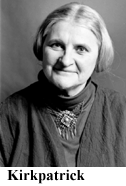 Kirkpatrick is “a trained artist as well as an historian of contemporary art and has developed courses with a broad appeal to undergraduate students. Her path-breaking use of the tools of instructional technology has proven to have broad pedagogical applicability, not only in the teaching of the history of art but also in any subject involving methodologies of observation and analytical articulation. These efforts have been nationally recognized by her recent receipt of a prestigious Time Warner grant for pedagogical software development.”
Kirkpatrick is “a trained artist as well as an historian of contemporary art and has developed courses with a broad appeal to undergraduate students. Her path-breaking use of the tools of instructional technology has proven to have broad pedagogical applicability, not only in the teaching of the history of art but also in any subject involving methodologies of observation and analytical articulation. These efforts have been nationally recognized by her recent receipt of a prestigious Time Warner grant for pedagogical software development.”
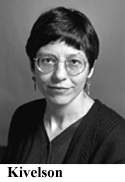 Kivelson is “one of the country’s most distinguished scholars of early modern Russian history and has single-handedly turned topics such as kinship in Muscovy and witchcraft in Imperial Russia into exciting subjects for undergraduates. As her students attest, she is not only a brilliant historian but a superlative teacher. Her classes, regardless of their size, emphasize an interactive learning environment that gives a vivid sense of the material and cultural context of early times in foreign places.”
Kivelson is “one of the country’s most distinguished scholars of early modern Russian history and has single-handedly turned topics such as kinship in Muscovy and witchcraft in Imperial Russia into exciting subjects for undergraduates. As her students attest, she is not only a brilliant historian but a superlative teacher. Her classes, regardless of their size, emphasize an interactive learning environment that gives a vivid sense of the material and cultural context of early times in foreign places.”
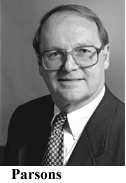 Parsons “has been especially effective as a mentor of women students in engineering, establishing programs that will help them for years to come. The 21 courses that Prof. Parsons has taught in naval architecture all reveal the `Parsons touch,’ that is, the development and adaptation of integrated computer and design tools for the needs of the engineers of the 1990s and beyond. Prof. Parsons was also responsible for overseeing a serious study of the undergraduate experience in engineering, which led to the new curriculum that was recently adopted by the faculty.”
Parsons “has been especially effective as a mentor of women students in engineering, establishing programs that will help them for years to come. The 21 courses that Prof. Parsons has taught in naval architecture all reveal the `Parsons touch,’ that is, the development and adaptation of integrated computer and design tools for the needs of the engineers of the 1990s and beyond. Prof. Parsons was also responsible for overseeing a serious study of the undergraduate experience in engineering, which led to the new curriculum that was recently adopted by the faculty.”
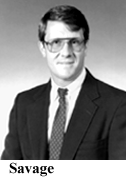 Savage “has guided more than 55 undergraduate students through individual research projects, and 12 of these students have become co-authors of papers growing out of their experience. He also instills in students a strong sense of moral values and the work ethic, which will serve them well in the future. In addition to being a prolific researcher, Prof. Savage has a national reputation for innovative education. His instructional materials have been distributed to universities around the world.”
Savage “has guided more than 55 undergraduate students through individual research projects, and 12 of these students have become co-authors of papers growing out of their experience. He also instills in students a strong sense of moral values and the work ethic, which will serve them well in the future. In addition to being a prolific researcher, Prof. Savage has a national reputation for innovative education. His instructional materials have been distributed to universities around the world.”

